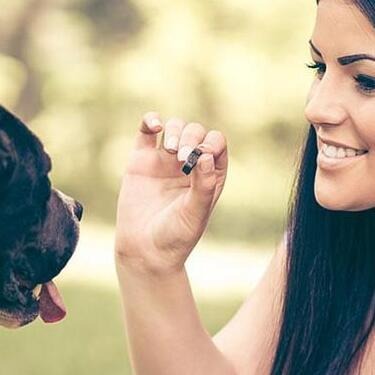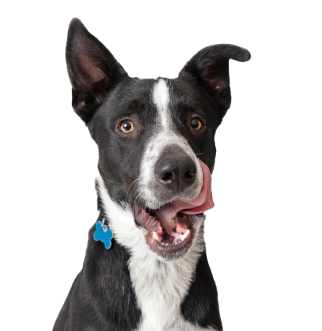
-
Find the right food for your pet
Take this quiz to see which food may be the best for your furry friend.
Find the right food for your pet
Take this quiz to see which food may be the best for your furry friend.
Featured products
 Adult Perfect Weight & Joint Support Chicken Recipe Dry Dog Food
Adult Perfect Weight & Joint Support Chicken Recipe Dry Dog FoodThis weight management and mobility support dog food was created with Hill’s unique understanding of the biology of overweight dogs.
Shop Now Adult 7+ Perfect Digestion Chicken, Whole Oats & Brown Rice Recipe Dog Food
Adult 7+ Perfect Digestion Chicken, Whole Oats & Brown Rice Recipe Dog FoodScience Diet's breakthrough nutrition supports ultimate digestive well-being & healthy microbiome for dogs age 7+
Shop Now Adult 7+ No Corn, Wheat, Soy Chicken & Brown Rice Dog Food
Adult 7+ No Corn, Wheat, Soy Chicken & Brown Rice Dog FoodSupports energy level and beautiful coat in mature dogs
Shop NowFeatured products
 Adult Perfect Digestion Chicken, Barley & Whole Oats Recipe Cat Food
Adult Perfect Digestion Chicken, Barley & Whole Oats Recipe Cat FoodScience Diet's breakthrough nutrition supports ultimate digestive well-being & healthy microbiome
Shop Now Perfect Weight Salmon & Vegetable Canned Cat Food
Perfect Weight Salmon & Vegetable Canned Cat FoodOver 70% of cats lost weight within 10 weeks when fed this nutrition
Shop Now Adult Savory Chicken Entrée Cat Food
Adult Savory Chicken Entrée Cat FoodPrecisely balanced nutrition with the delicious taste of savory minced chicken to help fuel the energy needs of cats during the prime of their life
Shop Now -
Dog
- Dog Tips & Articles
-
Health Category
- Weight
- Food & Environmental Sensitivities
- Urinary
- Digestive
- Joint
- Kidney
-
Life Stage
- Puppy Nutrition
- Adult Nutrition
- Senior Nutrition
Cat
- Cat Tips & Articles
-
Health Category
- Weight
- Skin & Food Sensitivities
- Urinary
- Digestive
- Kidney
-
Life Stage
- Kitten Nutrition
- Adult Nutrition
Featured articles
 Water
WaterDiscover why water is the most important nutrient for your dog or cat to live a healthy life. Find out how much water your pet should consume each day.
Read More The Incredible Science Behind Your Pet's Microbiome
The Incredible Science Behind Your Pet's MicrobiomeLearn what a pet's microbiome is, how it contributes to your pet's gut & overall health, and why nutrition is important in maintaining healthy microbiomes.
Read More Pet Food Storage Tips
Pet Food Storage TipsDiscover how and where to store your dry, as well as canned, dog and cat food. Learn how to find the "best before" dates on all Hill's pet food packaging.
Read More -
Find the right food for your pet
Find the right food for your pet


For every fact about dogs out there, there's a litter of dog myths running around. So, when someone tells you something about your pet, how do you know what to believe? Here's a list of the five most common misconceptions related to our furry friends.
1. Dogs See in Black, White and Gray
One of the most common dog myths is that dogs are colorblind. They can see some color, but the spectrum is limited compared to human color vision, says the American Kennel Club. This is because our canine pals are dichromatic, meaning their eyes only have two kinds of the cone cells that control color perception. Humans and most other primates have three kinds of cones, making us trichromatic. For an approximation of how your dog sees the world (similar to a person with red-green color blindness, scientists think) you can check out the Dog Vision online tool. That orange squeaky toy just might look blue to your pooch!
2. Dogs Age in Human Years
While dogs comparatively age much faster than humans, one of the common misconceptions about dogs is that in one year of their life equals exactly seven human years. This fuzzy formula would mean a ten-year-old dog is comparable to a seventy-year-old human. According to Priceonomics, this myth has been around since at least the thirteenth century! Your pup grows up and ages very quickly, but the rule of seven (or three for cats) isn't precise. What truly affects your dog's age in human years is his size, breed and genetic makeup. Wondering how old your dog is right now compared to your brother or grandpa? Pet Health Network® has a great chart based on weight and age to help you figure out how your pooch ages over time.

3. Dogs with Warm, Dry Noses Are Sick
It's often believed that a healthy dog has a cold, wet nose. However, warm or dry noses are completely normal for dogs and shouldn't be taken as a sign you should worry about your pet's health. Petful writes that everything from dry air to allergies to simply taking a nap can affect the wetness of your dog's nose. However, while nose health isn't normally concerning, if you notice your pet's nose is constantly dry, cracking or running (not simply wet), make an appointment with your veterinarian.
4. Dogs Have Clean Mouths
Yuck. Of all the dog myths you hear, don't believe this one. Dogs explore their world with their mouths and noses, and because of that, there's no telling what's been in your pet's mouth that very day. (Remember, some dogs enjoy eating their own poop.) If dental hygiene is important to you, commit to a daily teeth-brushing routine. As far as getting sick from a doggy kiss, the New York Times reports that the germs in your dog's mouth are typically specific to dogs. Some pathogens like salmonella and certain rare bacteria strains can be passed on to humans in dog saliva, but serious infections are relatively rare. So don't stress too much over the occasional lick.
5. Dogs Wag Their Tails When They're Happy
Think your pup is showing you how pleased he is that you're home when he slaps his tail from side to side? You may be right, but a wag represents a lot more than happiness. A wagging tail can also be a sign of anxiety, frustration, or nervousness, says PawCulture. So how do you know whether your dog is happy or apprehensive when he sees you? Pay attention to his overall body language. Pet Health Network suggests looking at a dog's stance, the position of his ears and the look in his eyes before you approach him.
6. Dogs Should Eat Like Wolves
While it is true that dogs and wolves share a genetic ancestral line, dogs and wolves are from the same animal. Dogs have evolved over thousands of years from strict carnivores that wolves are, to be omnivores — meaning that a raw meat-based meal can actually have very negative health consequences for your dog. In addition, to being a domicile pet rather than a wild beast of the forest, wolves tend to only live around six years — much shorter than dogs, of which proper nutrition has been shown to play a role. So, don't buy the hype when pet food companies tell you to feed your dog a "wolf-like" diet; rather look for one that is balanced with a dog's specific biologic makeup in mind.


Tasty Tips
7. Cracking the Windows is Sufficient to Leave a Dog in a Car
Nope, nope, nope. In extreme weather conditions, dogs can suffer severe health problems even after a few minutes in an overly hot or cold car. It's best to not leave your dog in the car on days like these. Even if a quick run into the store could turn into a very bad situation for him if you get stuck inside. There are even some states that have permission to break into your car to rescue your dog if you leave your dog in there. Just don't do it. Remember these are your fur children, and just like human children, never leave them unattended in a locked car.
8. You Can't Teach an Old Dog New Tricks
One of the more common dog myths, this one is just as mythical as the rest. While there is some truth to dogs needing to be socialized from an early age to help prevent behavior problems as they age, it doesn't mean your older dog can't still learn. Don't believe us? Well maybe you'll believe Chaser, the world's smartest dog, who has reached senior status and still learning new tricks.
9. Dogs Hate Mail Carriers
Okay, so we don't know if your dog has an actual vendetta against your mail carrier, their strange behavior generally arises from a need to alert and protect you — their pack leader. So, when they see this stranger approaching your home, they are just doing what they feel like they need to do to protect you. One way to curb some of this behavior is to introduce your dog to your mail carrier on a couple of occasions so that they see this person as a friend rather than a threat.
10. Dogs and Cats are Mortal Enemies

Cats are independent, finicky creatures while dogs are naturally curious creatures; it is this dynamic that roused this myth in the first place. Cats and dogs can get along fine as long as they are properly introduced and socialized. Now that doesn't mean that your cat won't swat at your pup when your dog wants to play and your cat just wants to be left alone, so it's best to understand when a situation could escalate and try and resolve it by redirecting the playful one toward something else. Now, the myth of whether there is a secret society of cats trying to overtake the world and dogs are human's first line of defense from this happening ... the myth has still yet to be debunked.
11. Rubbing Your Dog's Nose in an Accident Will Prevent Them in the Future
Again, myth. Dog's tend to understand behavior problems at the time that the behavior occurs. So, when you come home to find an accident and rub your dog's nose in it, it is very likely that he will not make the connection to know what he did. So, you are in essence punishing a dog that doesn't know why he is being punished. This could exacerbate the issue and create more potty problems in the future. Rather, it is best to try and catch him in the act and redirect him to his proper potty destination. Also, make sure to clean up accidents with a pet friendly cleaner, as dogs have an acute sense of smell and will often return to spots they've marked before.
Bonus: Dogs Rely on You for Care
We can safely say that this one is true! Your dog sees you as his pack leader and relies on you for his care. This means finding him proper nutrition, regularly grooming him, exercising him, taking him to the vet regularly and providing him with extra pets and snuggles when he needs them.
It's easy to understand how misconceptions can spread, but now it's your turn as a well-informed pet parent to set the record straight. The next time you hear one of these dog myths from a friend, tell them where to fetch the truth!


Erin Ollila believes in the power of words and how a message can inform—and even transform—its intended audience. Her writing can be found all over the internet and in print, and includes interviews, ghostwriting, blog posts, and creative nonfiction. Erin is a geek for SEO and all things social media. She graduated from Fairfield University with an M.F.A. in Creative Writing. Reach out to her on Twitter @ReinventingErin or learn more about her at http://erinollila.com.
Related products

Supports energy level and beautiful coat in mature dogs

Delicious braised beef paired with tender vegetables in a succulent stew

This weight management and mobility support dog food was created with Hill’s unique understanding of the biology of overweight dogs.

Science Diet's breakthrough nutrition supports ultimate digestive well-being & healthy microbiome for dogs age 7+
Related articles

Understand the role that Omega-6 and Omega-3 fatty acids play in your dog's overall health, and how you can ensure they are getting enough.

Learn about Hill's puppy food and the nutritional benefit & high quality ingredients that it contains for your pup.

Large and giant breed puppies have different nutritional needs than other dogs. Learn how to provide the special care they need to grow up big and strong.

Proper nutrition for your pregnant or nursing dog is vital to her and her puppy's health. Learn what you should do provide her with the proper nutrients.

Put your dog on a diet without them knowing
Our low calorie formula helps you control your dog's weight. It's packed with high-quality protein for building lean muscles, and made with purposeful ingredients for a flavorful, nutritious meal. Clinically proven antioxidants, Vitamin C+E, help promote a healthy immune system.
Put your dog on a diet without them knowing
Our low calorie formula helps you control your dog's weight. It's packed with high-quality protein for building lean muscles, and made with purposeful ingredients for a flavorful, nutritious meal. Clinically proven antioxidants, Vitamin C+E, help promote a healthy immune system.

